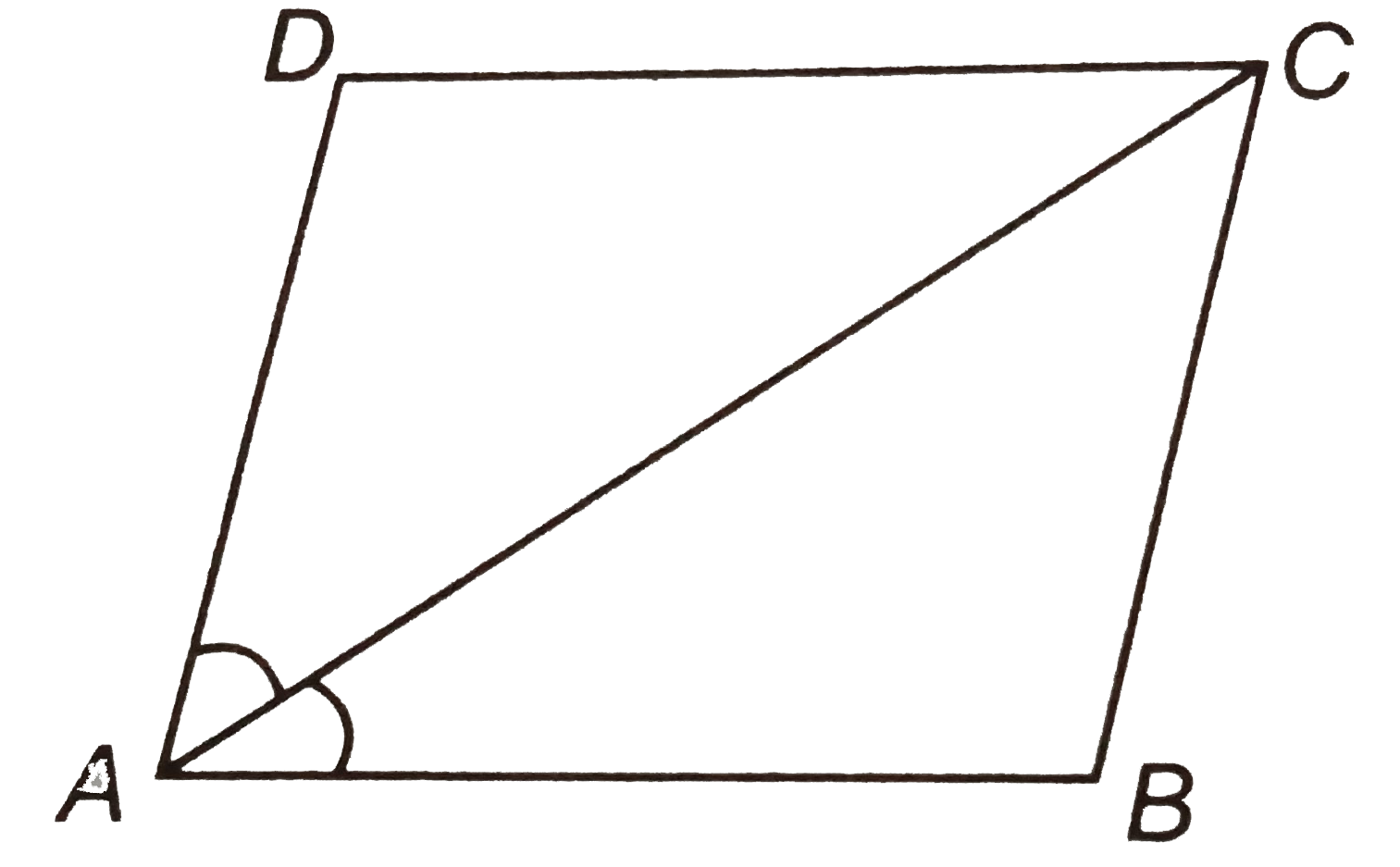If diagonal of a parallelogram bisects one of the angles of the parallelogram, it also bisects the second angle. Also, prove that it is a rhombus.
Video Solution
Text Solution
Given Let ABCD is a parallelogram and diagonal AC bisects the angle A.

∴ ∠CAB=∠CAD ...(i)
To show ABCD is a rhombus.
Proof Since, ABCD is a parallelogram, therefore AB∣∣CDandAC is a transversal.
∴ ∠CAB=∠ACD [alternate interior angles]
Again, AD∣∣BCandAC is a transversal.
∴ ∠CAD=∠ACB [alternate interior angles]
So, ∠ACD=∠ACB [∵∠CAB=∠CAD,given]...(ii)
Also, ∠A=∠C [opposite angles of parallelogram are equal]
⇒ 12∠A=12∠C [dividing both sides by 2]
⇒ ∠DAC=∠DCA [from Eqs. (i) and (ii)]
⇒ CD=AD
[sides opposite to the equal angles are equal]
But AB=CDandAD=BC
[opposite sides of parallelogram are equal]
∴ AB=BC=CD=AD
Thus, all sides are equal. So, ABCD is a rhombus. Hence proved.
|
Topper's Solved these Questions
Similar Questions
Knowledge Check
The diagonals of a rhombus bisect each other at _____ angles.
AAcuteBObtuseCRight.DStraight
The diagonals of a parallelogram bisect each other.
View SolutionOne diagonal of a parallelogram biscets its one of the angles. Show tht it will also bisec the opposite angle.
View SolutionThe diagonals of parallelogram bisect each other ( True/ False)
View Solutionif diagonals of a parallelogram bisect each other,prove that its a rhombus
View SolutionA diagonal of a parallelogram bisects an angle. Will it also bisect the other angle? Give reason.
View SolutionIf diagonal of a quadrilateral bisects each other at right angles then it is a
View SolutionIf the diagonals of a parallelogram are equal and intersect at right angles, then the parallelogram is a square.
View Solution
